1837 – August Sagner
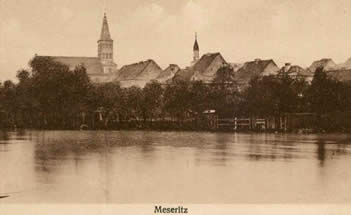
Johann August Sagner was born on April 29, 1837 in the Prussian-controlled town of Meseritz located in Kreis Meseritz (Meseritz county) in Großherzogtum Posen (the Grand Duchy of Posen). Today the town is in Poland and is called Międzyrzecz.
Johann August was baptized on May 4, 1837 in Evangelische Kirche Meseritz (the Evangelical Church of Meseritz). His parents were Johann Christian Sagner (variously listed in church records as a ploughman, a farmhand, and a servant) and Anna Rosina Längert. Johann Christian’s father was Christian Sagner, born sometime around 1770, and his grandfather was Gottfried Sagner, born about 1745. (That’s about as far back as we have been able to trace the Sagner line.)
Johann August went by his middle name throughout his life in order to differentiate himself from his father, Johann Christian. August had at least one sibling, a sister, Anna Louise Sagner, born in 1834.
Meseritz
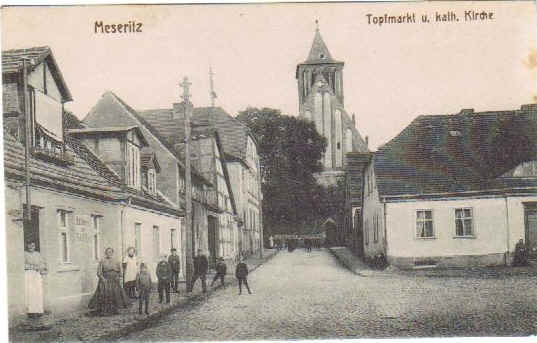
The small town of Meseritz is situated on the Oder river (Obra in Polish) near the confluence with the Paklic river.
The area around Meseritz is part of the vast flat Polish plains. It is heavily forested (predominantly pine) with wild mushrooms and is rich in wildlife including white storks, otters, beavers, deer, elk, and wild boar. Ice Age glaciers left moraine deposits on the flat landscape, resulting in hundreds of “finger lakes” with abundant fishing. (A local legend claims that the Oder river and the adjoining lakes near Meseritz are home to a giant long-lived monster carp which is said to eat ducks, swans and small dogs.)
The town’s origins go back to the 9th century when the Polish ruler Bolesław I Chrobry (known as Boleslaus the Brave) settled Benedictine missionaries in what later became the town. In the following centuries, control of the town and area around changed hands several times. Poles, Brandenburgers, Swedes, and Prussians all played a part in the history of Meseritz.
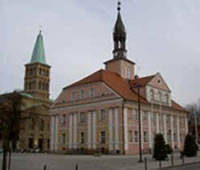
In the center of the market square is a brick-built and turreted town hall, some of which dates back to 1581. Behind it is the Evangelical church.
On January 1, 1818, Meseritz officially became the center of the surrounding rural county, called Kreis Meseritz. As such, Meseritz was the location of the police station, the Amtsgericht (local court), and the Standesamt (civil registration office). It was also the location of two churches—Protestant (Evangelical) and Roman Catholic—and a Jewish synagogue.
In 1905, Meseritz had 5,800 residents. Twenty-five years later, it had grown to about 16,000 people. In 2006, the population of Międzyrzecz was about 18,800.
Since the sixteenth century, Meseritz had a significant Jewish population. Unfortunately, the history of the Jewish community in Meseritz is a bit confusing, because there was another town named Meseritz which is also located in modern-day Poland. Międzyrzec Podlaski—sometimes translated as Meseritz, Meserich, Meseritch, or Mezritch, is in eastern Poland. The Międzyrzecz or Meseritz which was in the region of Posen is in western Poland today.
Meseritz-Obrawalde
In 1939, a mental health hospital in the nearby town of Obrawalde (now Obrzyce), usually referred to as Meseritz-Obrawalde, became the site of what was probably the most notorious killing center of the Nazi “wild” euthanasia program. It was termed “wild” because it was done in a decentralized manner at various German hospitals. It is believed that more than 10,000 handicapped patients were killed at Meseritz-Obrawalde between 1941 and 1945.
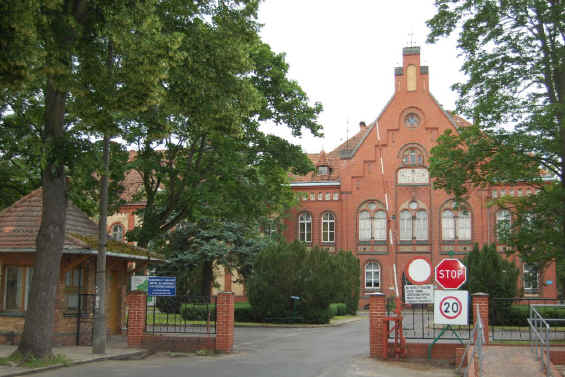
During the “wild” euthanasia phase, handicapped patients that were to be killed at the killing centers arrived by transport, often in the middle of the night. At the beginning of 1942, the first trains with about 700 patients arrived at Obrawalde. At the end of the year and especially in 1943 these trains arrived more and more frequently. From all parts of Germany, patients were abducted to be killed in Obrawalde.
The staff selected for killing patients who were unable to work as well as “patients who caused extra work for the nurses, those who were deaf-mute, ill, obstructive, or undisciplined, and anyone else who was simply annoying.” Those selected to be killed were “taken to so-called killing rooms where physicians and nurses killed them using orally-administered drug overdoses or lethal injections.” Fraudulent death certificates were prepared and the bodies were cremated.
In 1965, a trial was held in Munich of fourteen female nurses who had served at Meseritz-Obrawalde. They were accused of “cooperation with the Euthanasia Program” by killing thousands of mentally disabled patients through the administering of overdoses of Veronal or Luminal, or by injections with Morphia-Scopolamin or plain air, respectively.
Großherzogtum Posen
In 1792, Großherzogtum Posen (The Grand Duchy of Posen) was carved out of an area of Królestwo Polskie (the Kingdom of Poland) known as Wielkopolska (Greater Poland), which was the core of the early medieval Polish state. This area has been called the “cradle of the Polish nation.”
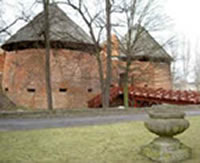
A moated castle near Meseritz was built by King Kazimierz Wielki (Casimir the Great). The capital of the Grand Duchy, and later the province, was the city of Posen (Poznań in Polish).
In 1792 in Vienna, representatives of Friedrich II of Prussia, Maria Theresa of Austria, and Catherine of Russia agreed to partition large sections of Poland amongst themselves. In August 1792, their armies invaded and occupied the agreed-upon regions. The northwest part of Poland became the Grand Duchy of Posen. Under the control of Prussia, Posen connected East Prussia to West Prussia to form one contiguous unit. In 1793 and 1795, two further partitions annexed additional parcels of Poland to Prussia, including the city of Warsaw.
For the Sagners of Meseritz, the country in which they were born changed throughout the eighteenth and nineteenth centuries. Gottfried Sagner, born about 1745, would have been born in Królestwo Polskie (the Kingdom of Poland), as was his son Christian, born about 1770. Johann Christian Sagner, born about 1799, would have been a citizen of Großherzogtum Posen (the Grand Duchy of Posen).
When the Posen area came under Prussian control at the end of the eighteenth century, the feudal system was still in force. German settlers soon moved in alongside Polish serfs working on great estates.
Großherzogtum Posen was associated with Königreich Preußen (the Kingdom of Prussia) from 1815 to 1848. In 1848, when August Sagner was eleven years old, Großherzogtum Posen was fully integrated as a province (Provinz Posen) of Königreich Preußen. As such, it became part of the Norddeutscher Bund (North German Confederation) in 1867, and four years later, in 1871, it became a Prussian province of the newly formed Deutsches Reich (German Empire).
At various times in its history, Meseritz was also part of South Prussia and East Brandenburg. In 1938, Meseritz was integrated into the province of Brandenburg. In 1945, it was invaded by the Red Army and returned to Poland. Today, Międzyrzecz is part of the Lubuskie region (Ziemia Lubuska) of Poland.
1842 – Ernestine Kurtzhan
Auguste Ernestine Kurtzhan was born on June 27, 1842 in Meseritz. She was baptized on July 3, 1842 in the Evangelical Church. She too went by her middle name: Ernestine or Ernestina (as Ernestine was commonly pronounced).
Her parents were Johann Martin Kurtzhan and Anna Schirmer, both born about 1810. Johann was called in church records an “urban agriculturalist.” Perhaps this indicates that his home was in the town of Meseritz, but his farm lay on the outskirts.
A variety of crops were raised in the Großherzogtum Posen (the Grand Duchy of Posen): primarily rye and other grains, sugar beets, potatoes, and some tobacco and hops. Significant parcels of wooded land provided building materials and firewood. Geese and sheep were raised.
fire and plague in Meseritz
A fire broke out in Meseritz in 1845, destroying 300 homes. Following the fire, a cholera epidemic swept through the town. Within two weeks in 1848, 1,000 people died. The city was quarantined and cut off from the rest of the world. Only the postal messenger was allowed to quickly drop off the mail and leave.
1850 – 1859
We have no records of the early lives of August Sagner and Ernestine Kurtzhan until their marriage in Meseritz.
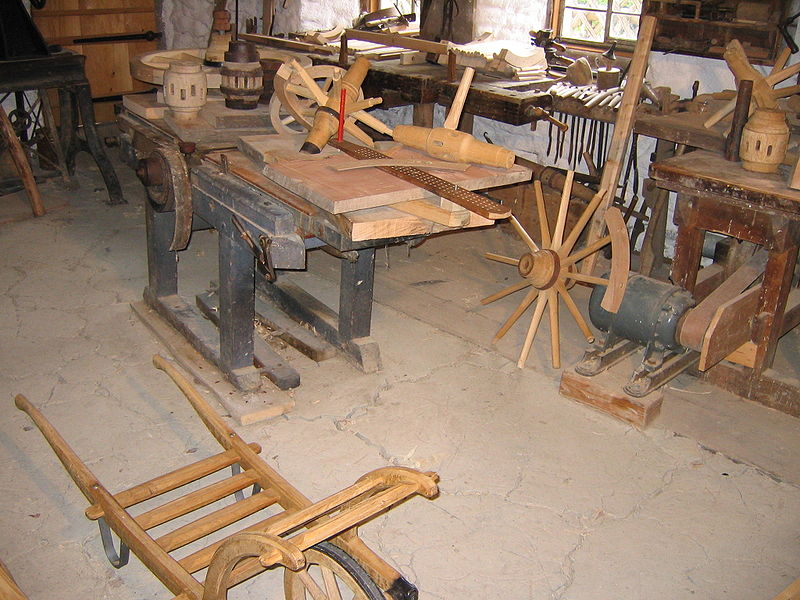
We do know, however, that as August Sagner grew, he became a skilled carpenter, cabinetmaker, and wagon maker. Church records list him as a master cartwright and wheelwright. His maternal grandfather, Johann Längert, was a journeyman carpenter, so perhaps he taught August the skills of his trade. In the United States, August Sagner was listed as a carpenter in various historical records.
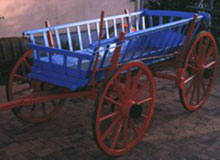
In his daughter Louise’s baptism record in 1864, the 27-year-old August Sagner’s occupation was listed as Stellmacher Mstr (Mstr was an abbreviation for Meister), meaning he was a master wheelwright or cartwright. In various German dialects at different times, his occupation could be called a Stellmacher (wheelwright or cartwright) or a Wagner (wagon maker). In general, the Stellmacher was a craftsman who made wagons, wheels and other agricultural implements made from wood. The word derives from the late Middle High German words stelle (meaning a carriage, frame, or chassis) and macher (meaning maker). The term originated in Silesia and spread across northern Germany during the Middle Ages.
1860 – 1869: marriage and children
August Sagner married Ernestine Kurtzhan on January 21, 1864 in the Evangelical church in Meseritz. August was 26 and Ernestine was 21 when they married.
They had three children, all born in Meseritz:
- Louise Emilie Sagner, born on October 7, 1864
- Gustave (or Gustav) Theodor Sagner, born on March 1, 1867
- Anna Augusta Sagner, born on November 26, 1868
emigration
In May 1869, 32-year-old August Sagner sailed from Bremen, Germany to New York on the ship Everhard Delius. He left his family behind in Meseritz.

The Everhard was built for the Delius Company at the port of Vegesack near Bremen in 1855. In 1869, the ship’s captain was Christian Herboth.
August’s occupation was listed as a “joiner.” He was traveling with another carpenter from Meseritz, Wilhelm Kurtzhahn, age 24, who was Ernestine’s younger brother. They arrived in New York on May 26, 1869 and then traveled to St. Louis, Missouri.
Fifteen years would go by before August was reunited with his wife and children in St. Louis.
1870 – 1879
We have no further records of August or Ernestine Sagner for the early years of the decade of the 1870s. August did not appear in the U.S. census of 1870, or at least I have not found that record if he was counted.
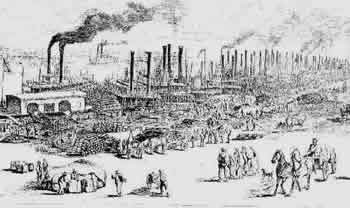
The post-war period from 1865 to 1880 was a time of prosperity and rapid expansion in the city of St. Louis. Work was plentiful for a skilled carpenter, especially in construction. Many new subdivisions were platted in the city as it expanded out from the riverfront to the west, north and south. The Mississippi River was spanned at St. Louis in 1874 when the Eads Bridge was dedicated. Its completion allowed unification of rail facilities on both sides of the river, eliminating dependence on ferries to ship cargo across the river. Riverboat traffic began to decline as rail traffic increased. In 1876, as it reached its current boundaries, St. Louis became an independent city completely separated from the surrounding St. Louis county.
The 1878 Gould’s St. Louis Directory listed August Sagner as a carpenter residing at 2004 Franklin Avenue in St. Louis.
A year later, in 1879, the Gould’s St. Louis Directory listed August Sagner as a carpenter living at 711 N. 20th Street.
1880 – 1889
August Sagner again appears in the 1880 census in St. Louis. However, this is where I encountered some confusing information. The spouse of August Sagner listed in the 1880 census is Christine, not Ernestine, and her birthplace is Württemberg, not Prussia. August and Christine Sagner actually appear twice in the 1880 census records for St. Louis, Missouri at two different addresses.
On June 3, 1880 they were living at 2004 Franklin Avenue.

They were counted again on November 9, 1880 at a different location: 3120 Brantner Place.

In both cases, Christine is clearly listed as August’s wife and at age 40 is about seven or eight years his junior. His occupation is listed in both records as a carpenter and she is recorded as “keeping house.” No children are in the household. Because of the presence of Christine, one could reasonably conclude that perhaps these records are of a different August Sagner.
However, the second address—3120 Brantner Place—appears ten years later in a record that confirms that this is the correct August Sagner.
1890 city directory
The 1890 St. Louis City Directory confirms that an August Sagner was still living at 3120 Brantner Place. He is described as a carpenter. This directory also lists his children—Louise and Gustav—at the same address. Louise was working as a dressmaker and Gustav was identified as a carpenter like his father. There is no mention of Ernestine or Anna the youngest child, but city directories usually listed only people with an occupation or a business.
This record corroborates that the August Sagner on Brantner is the right person, but doesn’t explain the spouse named Christine in 1880.
Christine Sagner could be a misprint. But if so, the error was repeated twice by different enumerators. And the birthplace of Württemberg, not Prussia, was consistent on both records. Later census records reveal that August’s children Gustav and Louise came to to the United States in 1884 and that Ernestine and Anna arrived in 1885. So, all we know at this point is that August Sagner was living with a woman named Christine in 1880, but by 1884 she was out of the picture.
1884 – 1885: family emigration
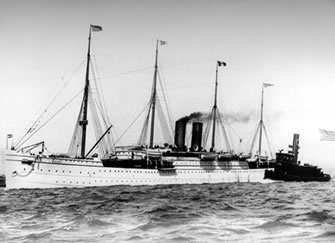
Passenger ship records inform us that Gustav and Louise Sagner sailed together from Bremen to New York on a ship named Werra, arriving on October 18, 1884.
No record of the voyage made by Ernestine and Anna in 1885 has been found.
The Gould’s St. Louis Directory for 1885 lists both August Sagner and Gustav Sagner as carpenters living at 3120 Brantner Place in St. Louis.
Four years later, Gould’s St. Louis Directory for 1889 lists August and Gustav as carpenters, still living at 3120 Brantner Place.
1890 – 1899
Unfortunately, no census record is available for 1890. The Federal Census of 1890 was destroyed by a fire at the Commerce Department in Washington, D.C. on January 10, 1921. The surviving fragments of 1,233 pages list only 6,160 of the 62 million people counted.
In 1890, the Gould’s St. Louis Directory once again listed August and Gustav Sagner as carpenters at 3120 Brantner Place in St. Louis. Louise Sagner was a dressmaker at the same address. Annie Sagner was a dressmaker at 2344 Chestnut Street.
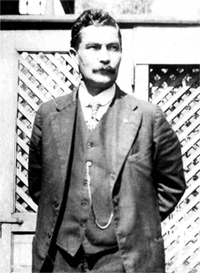
Gustav Theodor Sagner married Eleanora Wilhelmina Girthofer on February 3, 1893. (See Gustave Sagner and Eleanora Girthofer.)
They had four sons, three of whom were born in St. Louis during the decade of the 1890s:
- William Gustave Sagner, born January 26, 1894
- Walter Theodor Sagner, born November 25, 1895
- Arthur John Sagner, born May 24, 1897
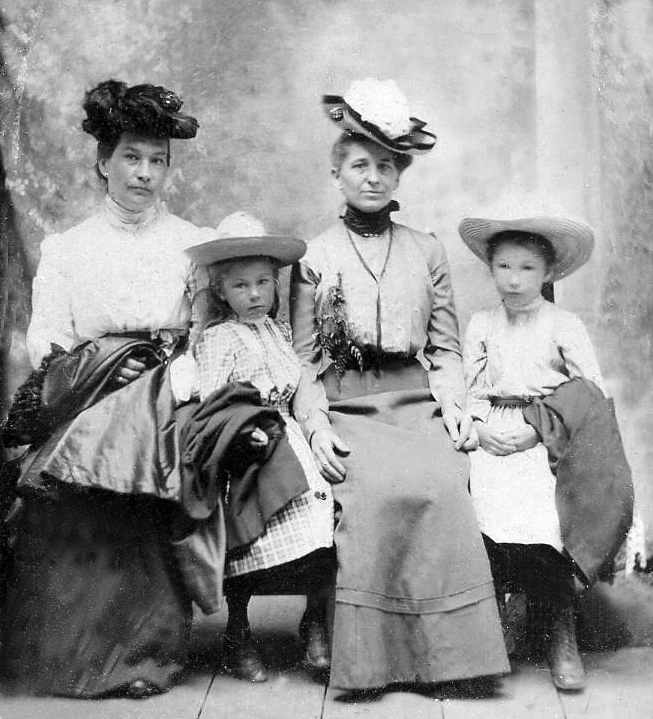
Gould’s St. Louis Directory for 1893 listed August Sagner as a carpenter, again at 3120 Brantner Place. Interestingly, it also had a listing for “L & A Sagner Dry Goods” at 4203 Clay Avenue. Following that were individual listings for Louisa and Annie Sagner with the company and address (L & A Sagner Dry Goods, 4203 Clay Avenue) following their names. They apparently lived at the same address. Unfortunately, the dry goods store did not last long. In 1895, the sisters were working at separate addresses.
On March 17, 1893, an article appeared in the St. Louis Post-Dispatch stating that Ernestine was granted a divorce from August Sagner. She claimed that he was a heavy drinker and that he abused her verbally and physically. She was awarded a lump sum alimony of $250.
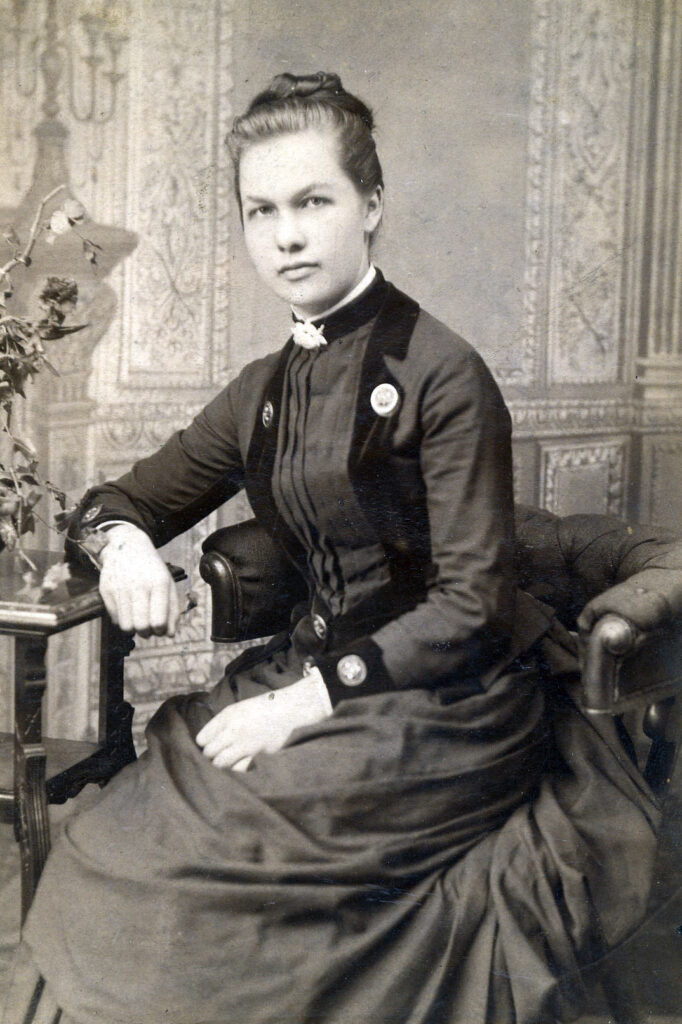
A report from the St. Louis Health Commissioner dated March 31, 1894, listed all of the licensed physicians and midwives in St. Louis. On page 53, was the name of Ernestine Sagner.
Gould’s St. Louis Directory for 1895 had August Sagner, a carpenter, residing at 3120 Brantner Place. Gustav T. Sagner, a carpenter living at 4564 North Market. Louisa Sagner, a dressmaker, was employed at 3040 Marcus Avenue, and Annie Sagner, a dressmaker, was working at 3303A Easton Avenue.
On May 13, 1896, Louise Sagner married Rev. Johannes (John) A. Endter, a German Evangelical pastor, in Mount Eden, California. Six years later, Anna Sagner married another German Evangelical pastor, Rev. Gustav A. Zimmer.
Rev. Johannes A. Endter
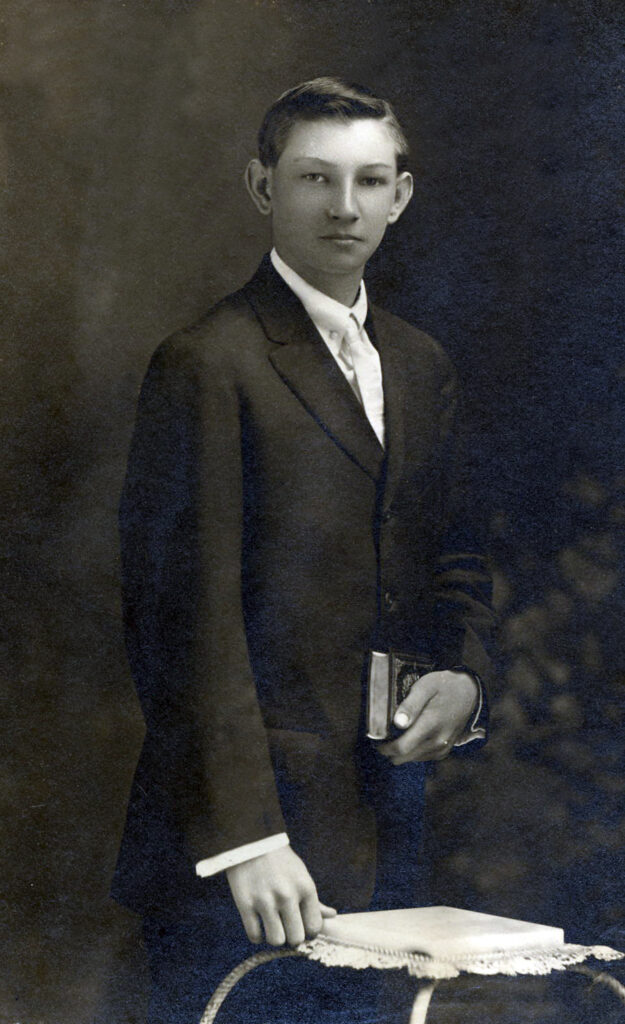
John Endter was born in Albrechts, Provenz Thüringen (the province of Thuringia), Königreich Preußen (Kingdom of Prussia) and emigrated to the U.S. in 1891. We have no record of how or where he met Louise, but presumably it was in St. Louis. He received his theological education at Eden Seminary, located in Wellston, Missouri, outside of St. Louis.
(For a more detailed history, see Johannes Endter and Louise Sagner.)
Johannes and Louise Endter had seven children. Their first two were born in California during the 1890s:
- Ruth Johanna Endter, born February 1897 in Woodland, California
- Anna Louise Endter, born August 5, 1898 in Woodland, California
Gould’s St. Louis Directory for 1899 lists Gustav T. Sagner, a contractor, living at 4564 North Market Street and Anna Sagner, a dressmaker, working at 1340 Euclid Avenue.
August Sagner died at age 62 of pneumonia on December 5, 1899 in St. Louis, Missouri. He was buried on December 7th in Deutsche Evangelischen Zions (German Evangelical Zions) Cemetery in Section R, Lot 3. Zion Cemetery is located at 7401 Saint Charles Rock Road in St. Louis.
1900 – 1909
The 1900 census lists Ernestine as a widow. She and Anna were living with the family of her son, Gustav and his wife Eleanor. The census clarifies the emigration process for the family. It states that Gustav Sagner emigrated to the United States in 1884. His mother Ernestine and sister Anna, emigrated in 1885.

In 1900, Louise and Rev. John Endter were living in Woodland, California.
Their last five children were born in this decade:
- Johannes Nathaniel Endter, born February 12, 1900 in Woodland, California
- Theodor Gustav Friedrick Endter, born April 16, 1903 in Oakland, California
- Esther Julia G. M. Endter, born September 14, 1904 in Nickerson, Kansas
- Gertrud Clara Emilia Endter, also born September 14, 1904 in Nickerson, Kansas
- Martha Augusta Endter, born June 3, 1906 in Nickerson, Kansas, and died October 8, 1907 in Nickerson, Kansas
John Endter was pastor of the Little German Church in Nickerson, Kansas from 1903 to 1911. I haven’t been able to find a record of this congregation.
Gustav and Eleanora Sagner’s fourth son was born in this decade:
- Fredrick Ernest Sagner was born on March 25, 1901 in St. Louis
Anna Augusta Sagner married Rev. Gustav Adolf Zimmer on August 13, 1902 in Denver, Colorado.
Rev. Gustav Adolf Zimmer
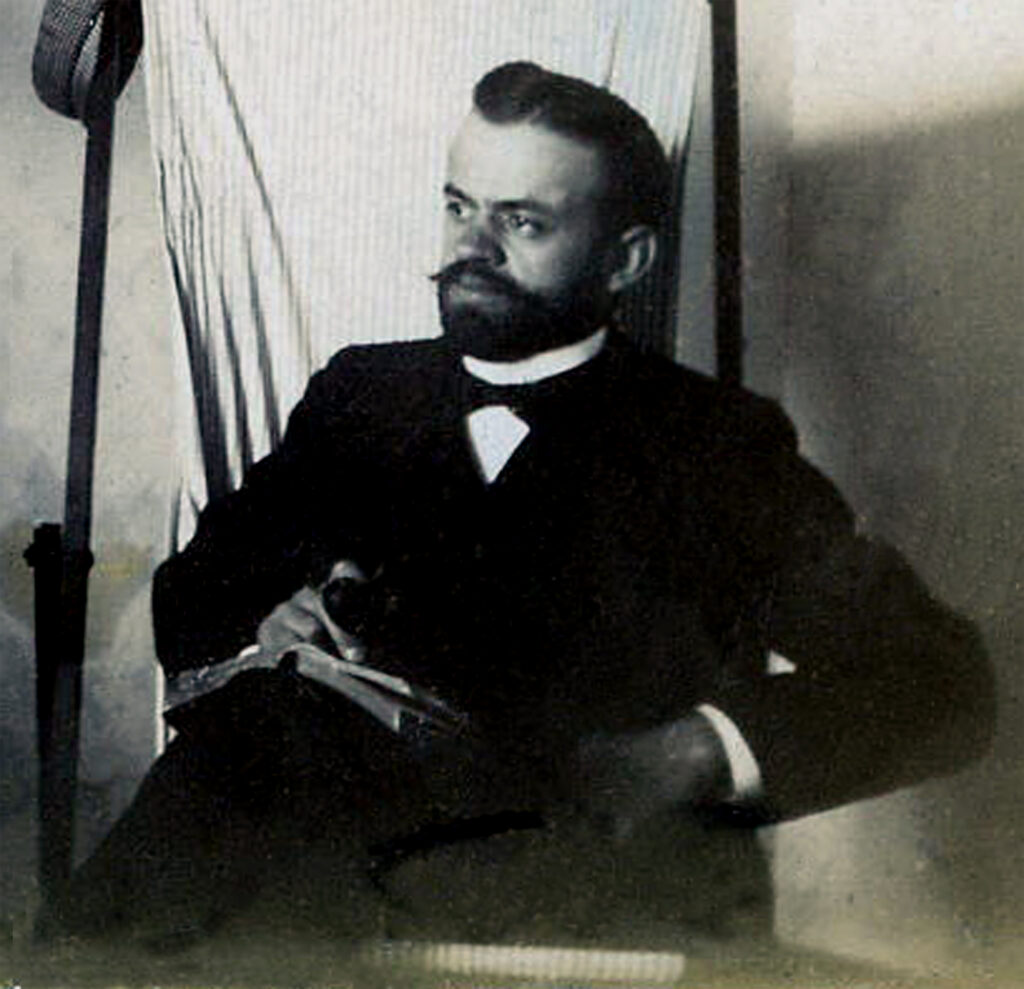
Gustav Zimmer was born in the town of Kraschen, in Kreis Guhrau (Guhrau county), Provinz Schlesien (the Province of Silesia), Königreich Preußen (the Kindom of Prussia) on December 22, 1869.
As a young man he apprenticed in a bakery. He eventually became a master baker and confectioner. However, he felt a calling to ministry and foreign missions in America. He received diaconal training at the Herrnhuter Bruedergemeine college in Niesky, Kreis Görlitz, Königreich Sachsen (the Kingdom of Saxony) in the Deutsches Reich (German Empire)
He arrived in the U.S. in 1900 at about age 31 and enrolled at Eden Seminary in Wellston, Missouri, just outside of St. Louis. He became an Evangelical pastor of the Deutsche Evangelische Synode von Nord-Amerika (the German Evangelical Synod of North America) and served churches in Utah, Missouri, and Wisconsin. Then he became a Lutheran pastor associated with the Joint Synod of Wisconsin, Minnesota, Michigan, and Nebraska, which was a predecessor body of the Wisconsin Evangelical Lutheran Synod (WELS). Gustav served Lutheran parishes in Wisconsin and Ontario. In the early 1920s, he left his religious vocation to become a chiropractor, with practices first in Ontario and finally in Germany, where he retired.
Gustav Zimmer was also a prolific author who wrote under the pen name Zimmer von Ulbersdorf on a variety of topics including German fine baking, parish ministry, the Mormon church, and chiropractics.
(For more detailed information on his life, marriage and work, see Gustav Zimmer and Anna Sagner.)
The five children born to Anna and Gustav Zimmer were:
- Johanna Ernestine Bertha Zimmer, born November 5, 1903 in Salt Lake City, Utah
- Bertha Elise Clara Zimmer, born August 19, 1905 in DeSoto, Missouri
- Lothar Paul Martin Zimmer, born October 30, 1908 in Bellefontaine, Missouri
- Dorothea Renata Zimmer, born November 6, 1909 in Cudahy, Wisconsin
- Dankwardt Samuel Wilhelm Zimmer, born October 29, 1911 in South Milwaukee, Wisconsin
death of Louise (Sagner) Endter
Louise (Sagner) Endter died at age 45 on March 28, 1908 in Nickerson, Kansas, leaving behind six children, ages 11, 9, 8, 5, and a pair of 3-year-old twins. Her husband, Rev. John Endter soon remarried in Kansas. We have no record of the wedding date and only know that his second wife was named Bertha (surname unknown).
1910 – 1919
In 1910, Ernestine Sagner (68) was no longer living with Gustave and Eleanor in St. Louis. She had traveled to Nickerson, Kansas to care for her grandchildren after the death of her daughter Louise.
The following year, Eleanor (Girthofer) Sagner died on February 3, 1911 at age 39, leaving behind four sons, ages 16, 15, 13, and 10. Gustave Sagner never remarried.
1920 – 1929
On January 3, 1920, Ernest Frederick Sagner married Alice Schuller in St. Louis. (See Ernest Sagner and Alice Schuller.)
In 1920, Ernestine Sagner (77) was back in Gustave’s household. She most likely moved in sometime after the death of Eleanor in 1911 to help raise Gustave’s four sons.
In 1921, Gustav and Anna Zimmer moved to Pembroke, Ontario, Canada with their five children.
death of Anna (Sagner) Zimmer
Anna Augusta (Sagner) Zimmer died at age 52 on July 8, 1921 in Pembroke, Ontario. The cause of death was tuberculosis of the peritoneum. Tuberculosis is caused by a bacteria that is spread through the air, when people who have the disease cough, sneeze, or spit. It most commonly affects the lungs, but infections can occur in many other bodily organs, including the gastrointestinal tract. Her death certificate said that Anna had suffered from the condition for ten months. In the end, a contributing factor in her death was emesis, or vomiting.
Anna Zimmer left behind five children ages 19, 17, 14, 13, and 11.
The 1922 Lutheran Almanac lists Rev. G. A. Zimmer in Pembroke, Ontario.
In the early 1920s, Gustav Adolf Zimmer left the Lutheran ministry to become a chiropractor. After Anna’s death, he returned to Wisconsin as he began his chiropractic career. He then returned to Ontario to set up a practice and eventually moved to Germany to establish a chiropractic school there. He took his youngest child, Dankwardt Wilhelm Zimmer (later Daniel William), with him to Ontario and Germany. (I am still researching who the remaining children were left with in Wisconsin.)
Ernestine Sagner died at age 79 on April 29, 1922 at Deaconess Hospital in St. Louis. She was buried on May 1, 1922 in Deutsche Evangelischen Zions (German Evangelical Zions) Cemetery, Section R, Lot 3, next to her divorced husband August. Zion Cemetery is located at 7401 Saint Charles Rock Road in St, Louis.
1930 – 1939
Rev. Gustav Adolf Zimmer died at age 69 on December 19, 1939 in Limbach, Saxony, Germany where he had settled for his retirement.
1940 – 1949
Gustave Theodore Sagner died at age 79 on December 30, 1946 in St. Louis. He is buried at Zion Cemetery at 7401 Saint Charles Rock Road in St. Louis.
In Polk’s St. Louis County Directory for 1946, Arthur John Sagner was listed as a vice president and secretary for the Easton-Taylor Trust Company, 4915 Delmar Boulevard (8) St. Louis, telephone number FOrest 4233.
1950 – 1959
Rev. John Endter died in March 1950 at age 84 in Milwaukee, Wisconsin.
William Gustave Sagner died at age 65 on October 23, 1959, at a location unknown, perhaps in Chicago. He is buried in Zion Cemetery at 7401 Saint Charles Rock Road in St. Louis alongside his parents.
1960 – 1969
1970 – 1979
Ernest Frederick Sagner died at age 77 on November 1, 1978 at St. Joseph Hospital in Kirkwood, Missouri.
1980 – 1989
Arthur John Sagner died at age 84 on January 25, 1982 in St. Louis.
Walter Theodore Sagner died in September 1984 at age 88 in Farmington, Hartford, Connecticut.